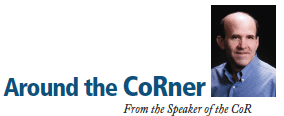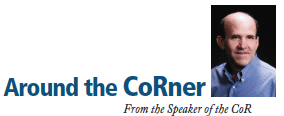Apathy – Is it Really a Bottom-Up Phenomenon?



For some reason, certain people volunteer to serve. The most common way I hear this explained is, “I get a lot from this organization. It’s now time for me to give something back.” It’s not always that positive, though. Sometimes, it sounds more like a gripe, “If I don’t do it, who will?”
On the other hand, for every one person volunteering, there are a handful of people participating. “If I don’t do it, someone else will.”
I guess there’s a payoff for volunteering. One could realize a sense of accomplishment and might even be appreciated if things go well.
Sometimes, though, there’s a price to pay for stepping up. Who takes the heat when things go south if not the leaders? But where do the leaders go when it comes time to shift the responsibility? They can’t put it on the members—it’s the members who elected them and it’s the members who pay the dues. It’s the membership roles that make the society exist—that give it viability, clout. No, the leaders can’t blame the members. It’s apathy, that invisible, insidious dynamic. Member apathy is the problem.
If the opening paragraphs of this column seem disjointed, it’s not because I’m struggling to overcome writer’s block, but rather, it’s because this is a difficult and complex topic. The one constant seems to be that every volunteer started out as a participant and their willingness to volunteer is directly related to their experience as a participant. In fact, the very viability of the society is predicated on the member experience.
Colleagues who see value…join. Members who experience value…renew. Members who stay…create the pool from which we draw leaders. Volunteers new to leadership…stumble occasionally as they gain experience. It is with this understanding of the nature of organizations that we appreciate the wisdom of our predecessors who recognized the value of establishing the Council of Representatives (CoR) to provide a training ground for future ASHI leaders.
Here we are in the heat of the nominating season. It’s through this process that the CoR helps to steer ASHI into the future. I’ve come to believe, though, that who we pick is not nearly as important as is the pool from which we pick. The nominating committees will work with what they have. What we, the CoR, can do is to nurture a fertile environment in which strong leaders can grow.
To that end, I continue to encourage the CoR Group Leaders to develop, maintain and utilize direct lines of communication between the CoR and the chapters.
Start with your own chapter. Be aware. Deliver a CoR report. Experience membership response. Recognize the interest (or the lack thereof) in what’s going on at the national level. Improve your process.
With that background, then, distribute national news to your groups. These are the people who elected you. They are counting on you to lead and the best way to lead is by example. Be the representative your chapter needs you to be. Then share that with your downline so they have a model to follow.
ASHI’s future success is directly related to the CoR’s current success. The CoR’s success depends on the effort we put into it now.
I’m convinced that member apathy starts at the top. People don’t join an organization planning to sit on their hands. They join in anticipation of realizing something positive. If what they discover is dynamic, positive and inviting, they will participate. If they experience leadership apathy, they might not even renew.
To Read the Full Article
ASHI offers its members unparalleled resources to advance their careers. ASHI offers training for inspectors at all levels of knowledge and experience, including resources about all major home systems. Members benefit from a vast network of experienced professionals, providing a community for mentorship and knowledge sharing..
In this Issue

FIND A HOME
INSPECTOR
Professional Networking
Grow your professional network, find a mentor, network with the best, and best part of the community that’s making home inspection better every day.
